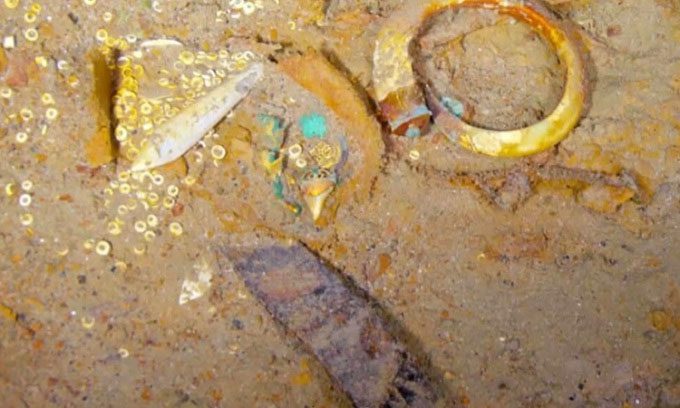The necklace made from the teeth of an ancient sea monster has been discovered during the Titanic wreck scanning project by Magellan.

The exploration company will preserve the necklace in its current state. (Photo: Magellan).
Never before has anyone seen the necklace from the Titanic shipwreck, the luxury passenger liner that was considered the most advanced of its time, 111 years ago. The Titanic sank after colliding with an iceberg in the North Atlantic, approximately 595 kilometers southeast of Halifax, Nova Scotia, on April 15, 1912. The ship was on its fourth day of its maiden voyage from Southampton, England, to New York, USA. The disaster led to the deaths of over 1,500 people, accounting for more than two-thirds of the crew and passengers on board at that time.
This unique necklace was discovered by Magellan, a company based in Guernsey, near the French coastline. This company specializes in underwater exploration and seabed mapping. As part of an underwater scanning project, Magellan captured 700,000 images of the Titanic wreck using two submarines. With these images, the company created the first full-scale digital scan of the Titanic, providing a new perspective on the wreck. Among the captured images, Magellan’s research team discovered a necklace containing gold and megalodon shark teeth, according to CEO Richard Parkinson.
Megalodon is an extinct species of giant shark that lived approximately 3.6 million years ago. As the largest shark to ever exist, the oldest megalodon skeleton dates back over 20 million years. The largest megalodon could reach lengths of 15 to 18 meters, according to the Natural History Museum in London. In comparison, the largest great white shark measures about 6 meters. Megalodon teeth can be nearly 18 centimeters long, although fossils typically range from 8 to 13 centimeters.
Magellan did not remove the necklace containing megalodon teeth from the wreck due to an agreement between the United States and the United Kingdom. Currently, Magellan is seeking to determine the owner of the necklace with the assistance of artificial intelligence (AI). The company is using AI to analyze footage of passengers boarding in 1912, examining the clothing they wore while implementing recognition techniques.
Magellan’s scan of the Titanic may help create a realistic 3D model or a digital twin of the wreck with unprecedented high resolution. Due to the remote location of the wreck at a depth of about 3,810 meters, fully surveying the area is quite challenging. The new model will allow individuals to zoom in and closely inspect the entire wreck for the first time.





















































